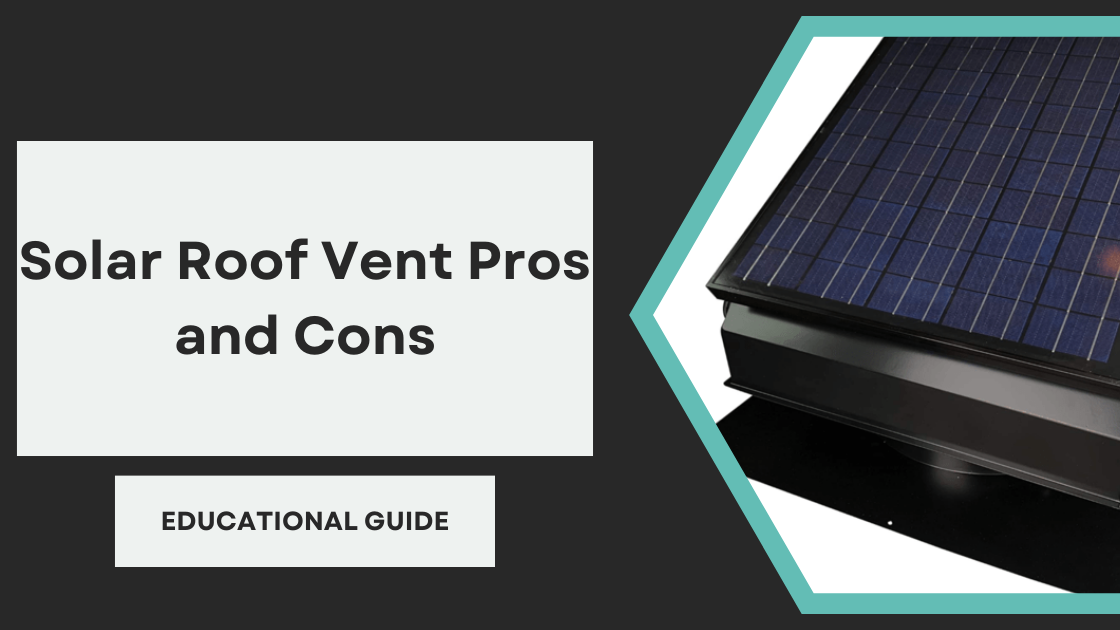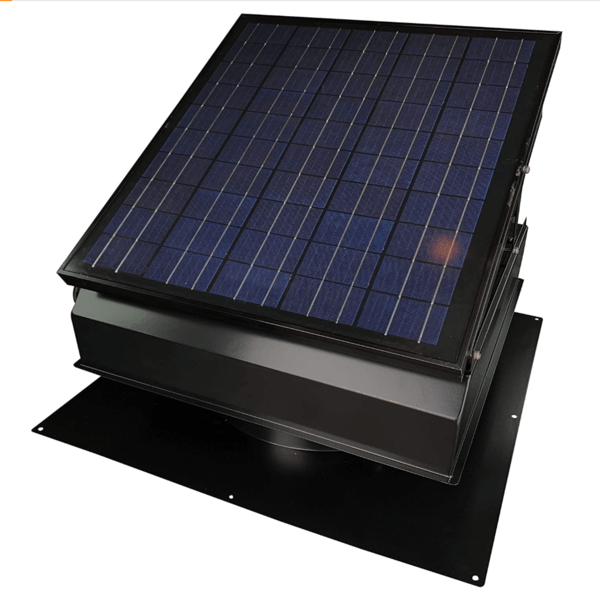
Read about Solar Roof Vent Pros and Cons so that you know exactly how they work, if they’re worth installing, and if it’s worth purchasing. Solar roof fans are a great addition to your home and a worthy renewable option compared to the plug-in AC type. Read below for more details.
Solar Roof Fans Pros and Cons
What Is A Solar Attic Fan?
The solar attic fans are a regular type of fan that is powered by the solar panel and circulates the air in your attic to cool it down. The solar panel is powered by the sun and operates the fan at no cost. Installed on top of your roof, which requires a hole to be cut to the desired shape

Why Install A Solar Attic Fan?
During the summer months in hotter climates, your roof attic can become 5 times hotter than inside your house! As your air conditioner works hard to cool your house down, it needs to work even harder when your attic is roasting like an oven.
The best thing you can do to help reduce the heat and your electricity bills is to install a roof vent fan. Solar Roof Vent Fans are the perfect addition to circulate air and cool your house down. Working with a vent gives the most benefit to air circulation.
Benefits
There are some great benefits to having a solar-powered attic fan, as they work autonomously and don’t require new electrical wiring to be installed. However, they do come with some disadvantages, which we will discuss further in detail.
These come in a range of sizes and styles that look slick and suit your needs for your home or business. That’s why reading our solar roof fans pros and cons will help you decide which one suits your needs.
Read below for our detailed Solar Roof Vent Pros and Cons
Pros
- Easy to install
- Quiet operation
- Zero running cost
- Autonomous running
- Cools down your attic, making your air conditioner more efficient and cost you less over time.
Cons
- Doesn’t work well in cloudy conditions
- Not as powerful as an electric plug-in type
- More expensive than the plug-in type
Final Thoughts
Solar Attic Fans are a great way to install a roof fan without relying on the electricity grid to make it work and lessen your carbon footprint by using renewable energy. The fan power is less than the plug-in type, so in really hot areas, you may need 2.
Electricians are not required to install this unit, so the extra money you pay to purchase it is covered by the cost of an electrician to install a plug-in type. In saying that, good models have an AC adapter that can help in some extreme cases or hot nights, but in most cases, it’s not required.
The fact that they don’t work as well in cloudy conditions does not matter too much, as your roof doesn’t get as hot as in direct sunlight, when it will work anyway. It’s an obvious choice to go for a Solar Attic Fan.
iLIVING Solar Attic Fan – iLIVING HYBRID Ready Smart Thermostat Solar Roof Attic Exhaust Fan
Specifications –
- 21 x 21 x 10 inches
- 30 pounds
- Smart thermostat control 65-130f
- Ip68 waterproof
- Brushless motor
- 20W
- 1750 Cfm
- Up to 2500 sq ft capacity
- Adjustable panel tilt
- Add on feature that plugs into AC
- 15 year warranty
Remington Solar Attic Fan – 40-Watt Solar Attic Fan with Thermostat/Humidistat/adapter
Specifications –
- 22.5 x 22.5 x 11 inches
- 30.1 pounds
- Automatic Humidistat & Thermostat
- Hail and Weather-resistant
- Brushless motor
- 40 Watt
- 2340 Cfm
- Up to 3400 sq ft capacity
- Adjustable panel tilt
- Automatic switchover AC adapter
- 15-year warranty
We hope you like our Solar Roof Vent Pros and Cons and helped you make a decision in whether it suits your needs.